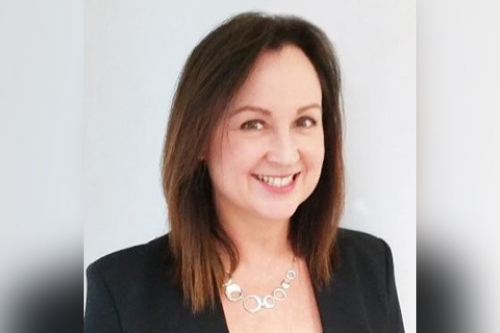

Australia’s Prime Minister Scott Morrison is attending the United Nations Climate Change Conference in Glasgow. According to news reports, so is Sun Cable’s CEO David Griffin.
Morrison is there promoting a net zero emissions policy that opposition leaders and climate experts have labelled a ‘joke’ and a ‘scam’. The renewable energy company’s boss is showcasing one of the world’s largest renewable energy projects. Griffin’s Australia-Asia PowerLink (AAPowerLink) aims to make Australia a world leader in the intercontinental transmission of renewable electricity.
“It’s the biggest renewable project in the world, ever. No-one has worked on something like this before,” said Jane Smith (pictured), head of energy and power in the Pacific for global brokerage Marsh.
Sun Cable says its $30 billion plus AAPowerLink project will create the world’s largest solar farm and battery storage facility in the Northern Territory. The project aims to build a 4,200 km undersea transmission system from Darwin, through Indonesia to Singapore.
The high-capacity solar, storage and transmission system will be capable of supplying up to 15% of Singapore’s total electricity needs from 2027, said a company statement.
Last month, Marsh was appointed the AAPowerLink’s risk management partner (RMP). Smith leads an Australia based multi-disciplinary team of more than 40, part of Marsh’s global energy and power division of about 700 people.
“It’s just so exciting. It’s the project of a lifetime,” said Smith.
The scheme has the backing of the Australian and Northern Territory governments and took another step forward in September when Indonesia’s government approved a subsea permit through Indonesian waters. A 750 km subsea survey of the Australian section of the transmission line is also complete.
Sun Cable said the infrastructure network will make it possible to power whole cities with renewable energy. Smith said this renewable energy project is a vision of connecting countries together that work collectively towards a net zero pathway.
“The other thing from our perspective is the huge impact that it will have on the local economy in the Northern Territory and help it emerge as a regional energy powerhouse,” she said. According to Sun Cable the four-year construction phase will create up to 1,500 jobs.
However, the multi-jurisdictional project has numerous challenges including the need for overseas government backing and also agreements in different energy markets.
Smith said when it comes to assessing risk and insurance issues, one factor is the project’s sheer scale. Sun Cable’s website says the system will be powered by 12,000 hectares of multiple solar panels called solar arrays and use the world’s largest battery storage system.
“So from our perspective, where are the materials coming from? What are the logistics of getting them from overseas to Australia and then onto a remote site?” said Smith, outlining some of the factors Marsh needs to consider.
There are also the risks that come from laying a cable on the seabed, including the possible threat of earthquakes, tidal waves and bad weather.
“You’ve got to think about the risk of landslides or sediment flows. The sediments will move down the slopes, [and] they have the potential to damage these cables and any infrastructure in the path of that flow, so you’ve got to make sure that the route is designed to be on either flat or tilted ground to minimize the impacts of it,” she said.
There are also possible delays in schedules to consider if there are supply challenges.
“You’ve got to keep projects on track because that [delays] has a real impact on the financing side of it and the insurance,” said Smith.
From a layman’s perspective, there are three main parts to the project: the solar farm, the battery storage and the undersea cable.
Smith said, from an insurance and risk perspective, those massive parts have to be considered both separately and together. For example, the proposed 12,000 hectare solar array between the Northern Territory towns of Elliott and Tennant Creek.
“You can see the scale of that. It’s never been done before, so what are the risks associated with that? And then you’ve got the energy storage that goes into it. So that’s about 36 to 48 gigawatt hours. Then you’ve got the subsea cable, over 4,000 kilometres of that and it spans three countries - you’ve got Australia, Indonesia, Singapore - and then you’ve got international waters.”
Then, she said, there’s the additional infrastructure that helps bring the project’s parts together. The proposed solar farm will be about 750km from Darwin and need an overhead transmission line to connect it to the city. Then further infrastructure in Darwin will be needed to get the cable from the land into the ocean and then more infrastructure in Singapore.
“All up, the size, the onshore, offshore aspects, the multi-jurisdictional aspects, the different country ratings, legal structures, the intercompany revenues, technologies, the market dynamics. They all have an impact on the insurance and risk management and what our job is, to make sure that we can have insurance fit around all those issues,” said Smith.
When asked about the ongoing hard insurance market and whether that impacted Marsh’s role in the project, Smith said that isn’t an excuse.
“It’s about looking at the project itself and making sure that we can de-risk it and then make sure that it’s a bankable project as well and have the right insurance [in place],” she said.
From Marsh’s perspective, so far the COVID-19 pandemic hasn’t impacted the project either.
“There’s already been a site trip up in the Northern Territory over the last week or two and that’s been really great for the integrated project delivery team to get together and just look at the enormity of it and some of the risks involved,” said Smith.
She said the project is still in its infancy.
A Sun Cable fact sheet on the project said construction is expected to commence in 2024 with electricity transmission to Darwin starting in 2026 and to Singapore in 2027.
